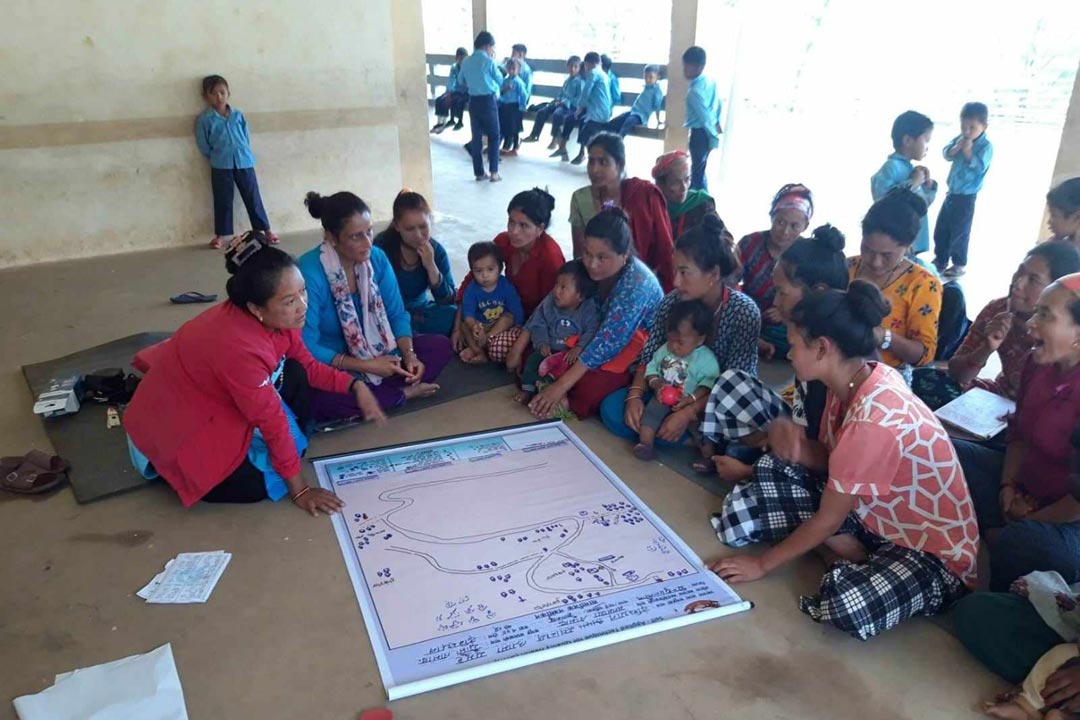Nepal braces for a fourth wave
Having vaccinated over 80% of its population, Nepal is prioritising children five and above, and the unvaccinated, to head off a possible fourth wave of COVID-19.
- 29 August 2022
- 4 min read
- by Chhatra Karki

According to COVID-19 Situation Reports published by the Ministry of Health and Population (MoHP), the number of active cases of COVID-19 in Nepal reached 5,433 on 3 August. The figure had previously surged to 2,276 on 20 July from only 120 on 20 June, although there were only two recorded deaths between in that period. However, 14 deaths were recorded in the time between 20 July and 3 August.
The message is clear in the mindset of the Nepali health sector: vaccinate the unvaccinated, including children.
Experts have labelled the surge in infections and deaths, fuelled by sub-variants of the Omicron variant of the virus, the fourth wave of the COVID-19 pandemic. By 3 August, 15 out of every 100 people tested positive for COVID-19.
“The fourth wave of the pandemic started on 20 June and is moving towards its peak,” says Dr Santosh Dulal, a Senior Microbiologist and Research Scientist at Anandaban Hospital, in the city of Lalitpur. “Our experience with the virus has taught us that the wave may last for about two to three months.”

Credit: Chhatra Karki
Dr Dulal warns that the situation could get worse if the highly infectious BA.4 and BA.5 sub-variants of Omnicron are not given proper attention.
“Cases of the BA.5 sub-variant have already been identified in Nepal. The death rate will increase if the infection rate keeps on rising,” Dr Dulal adds. “BA.5 is more fatal in comparison to other sub-variants of the Omicron variant. Since the virus has continuously been mutating, it may develop certain protections against vaccines. So, the use of masks and sanitiser and avoidance of large gatherings need to be equally promoted.”
He highlights the vaccination of children below 12 years as a crucial step in dealing with the upcoming wave of the pandemic.
Eighty-eight percent of the population above 12 years has already received a full dose of the COVID-19 vaccine. According to MoHP reports, Nepal has received 57,883,970 doses of vaccine from various sources, out of which 49,425,113 doses have already been administered. The government’s strategy of dealing with the fourth wave also focuses on using the vaccine stock to provide booster doses, and 7,276,922 booster doses have already been administered.
Have you read?
“Enough vaccines are available for the provision of booster doses. A campaign to administer booster doses is being aggressively undertaken,” says Dr Samir Kumar Adhikari, joint spokesperson at the MoHP, about the government’s plan on tackling the fourth wave.

Credit: Chhatra Karki
“The new infections have been seen mostly in the unvaccinated population. The surge in infections has alarmed the people, and the unvaccinated people are showing up for vaccination,’ Dr Adhikari adds.
According to Dr Adhikari, 80% of the new infections have reportedly been found in the unvaccinated cohort, whereas the remaining 20% have been seen in the partially vaccinated cohort in Nepal.
“The government has been working alongside various agencies and organisations to contain the virus. Messaging on the importance of masks, sanitisers, and physical distancing has been continued. Health services have also been upgraded to meet the needs of the hour,” Dr Adhikari explains.
The government started administering Pfizer vaccines to children between the ages of five to 12 years of age on 23 June. Noting the necessity to expedite the vaccination of children below 12 years, Dr Adhikari says, “Children below 12 years were previously not covered by the vaccination campaign, but now, vaccines are easily available for them.”
The message is clear in the mindset of the Nepali health sector: vaccinate the unvaccinated, including children.
Sumitra Dahal, a senior Assistant Health Worker (AHW) at Balkumari Health Post, Madhyapur Thimi municipality, Bhaktapur, who is currently busy setting up camps in schools around her health post, says, “We are reaching schools to administer Pfizer vaccines to children between five and 12 years. In addition, unvaccinated people thought that the pandemic was over and that getting a jab was not necessary anymore. But, with the fourth wave, they are increasingly showing up for vaccination. Also, the number of people reaching us for a booster dose has increased.”

Credit: Chhatra Karki
She believes that awareness is at the core of the success of the battle against COVID-19.
“Our health post is planning to send health workers and female community health volunteers to localities and people’s doors to raise awareness about the importance and efficacy of COVID-19 vaccines,” Dahal adds, optimistically.
In the earlier waves, the government focused on vaccinating the elderly, as did most countries. Eighty-seven-year-old Bikram Bahadur Shrestha, a resident of Madhyapur Municipality-4, Balkumari, Bhaktapur, was one of them.

Credit: Chhatra Karki
“I have already received my booster dose. I am hopeful that it will provide me protection from COVID-19 infection,” he shares.
With the government prioritising jabs for children and booster doses after fully vaccinating a large share of the national population, Nepal is better prepared than ever to face a wave of the COVID-19 pandemic.
More from Chhatra Karki
Recommended for you









